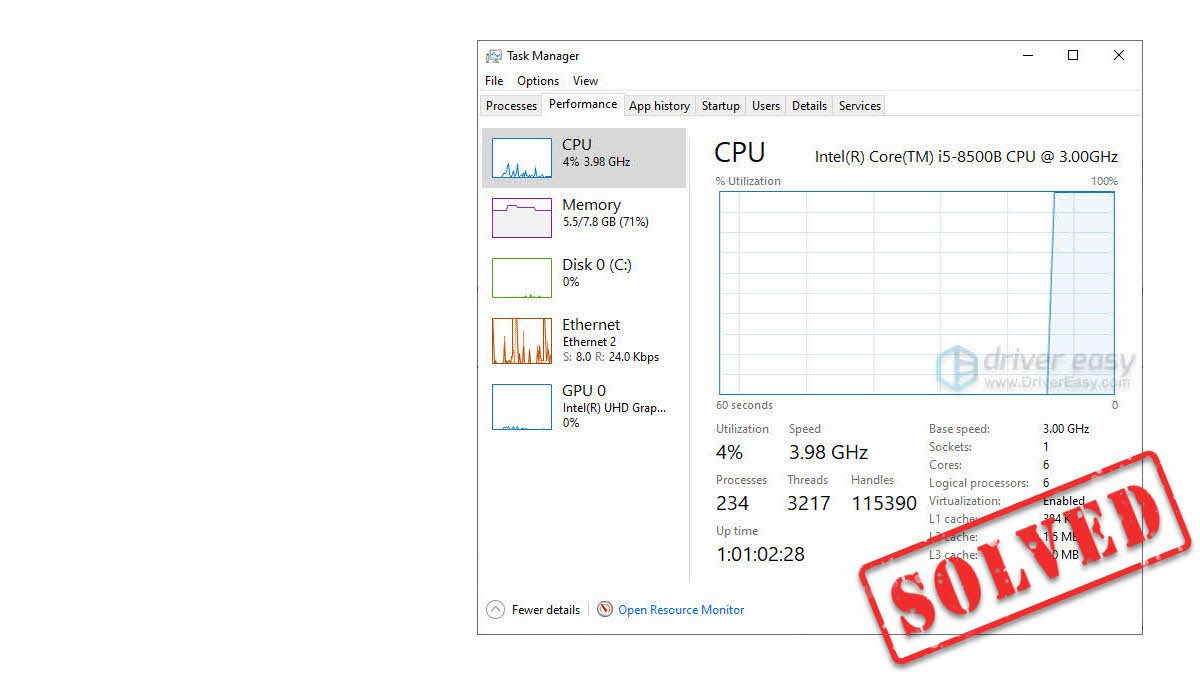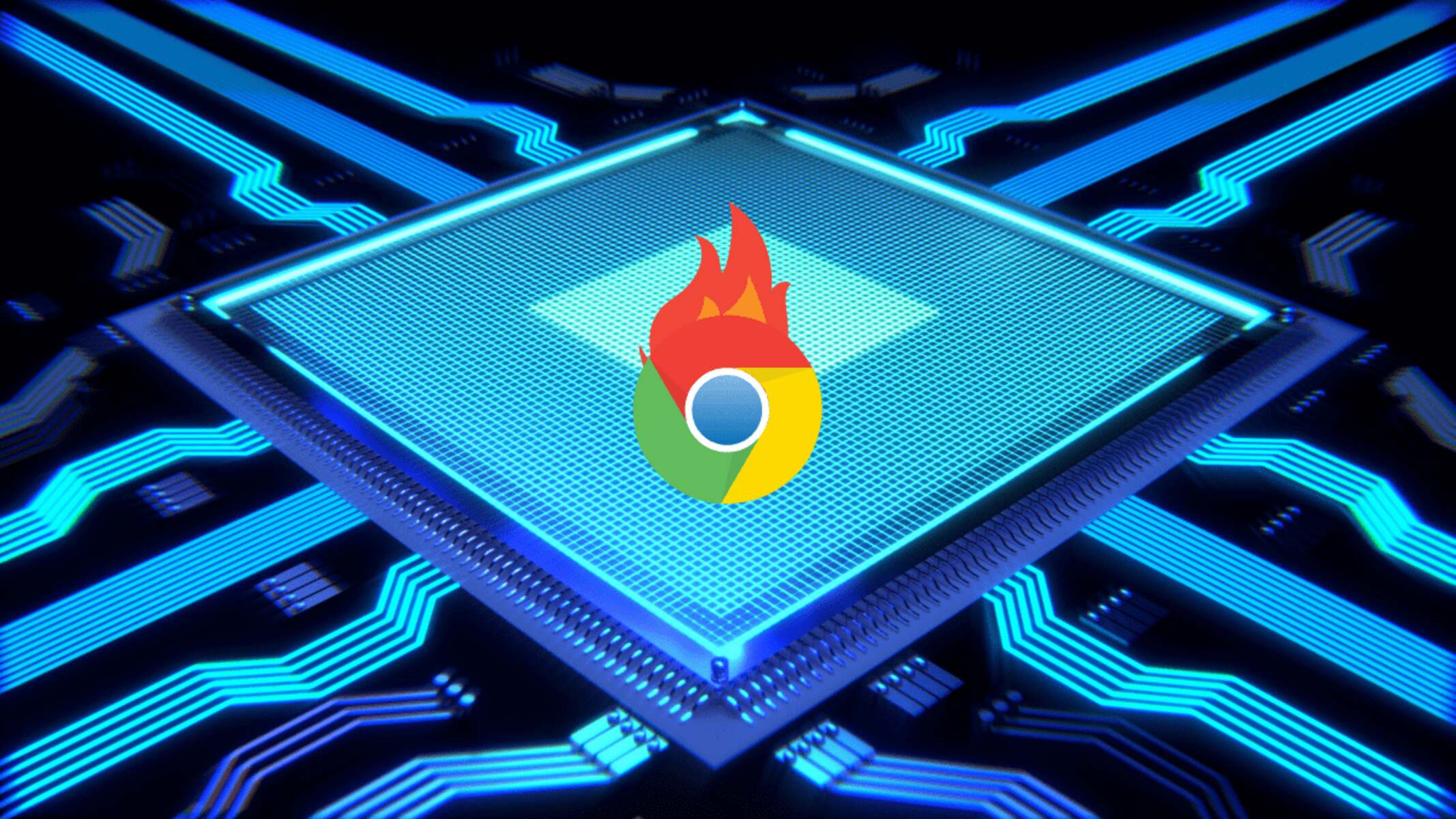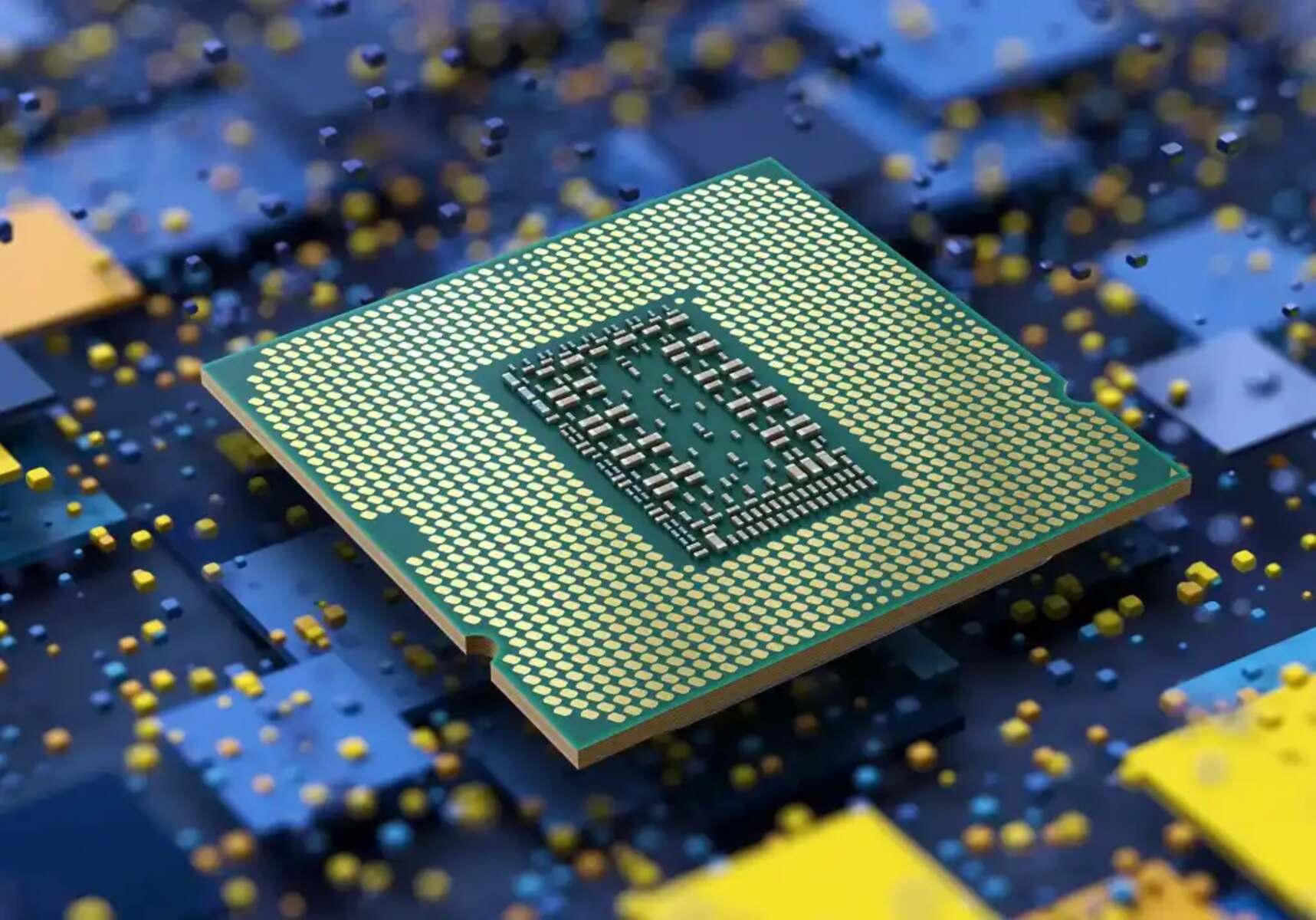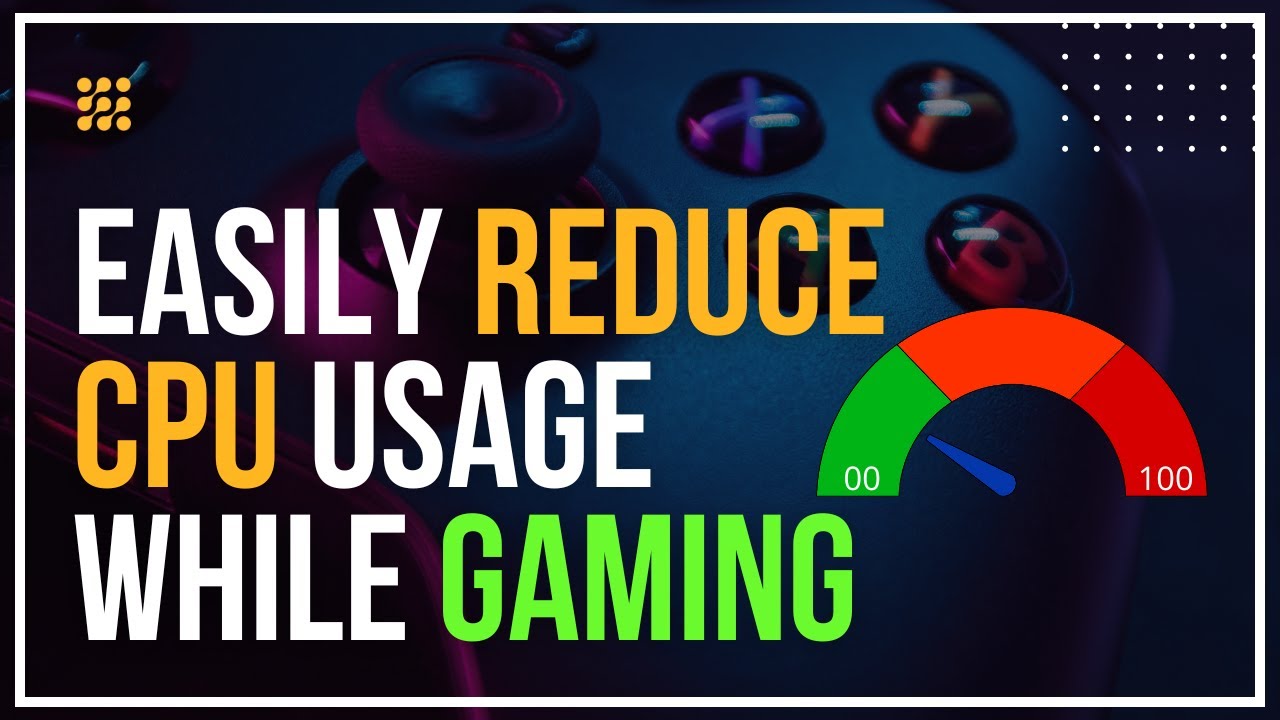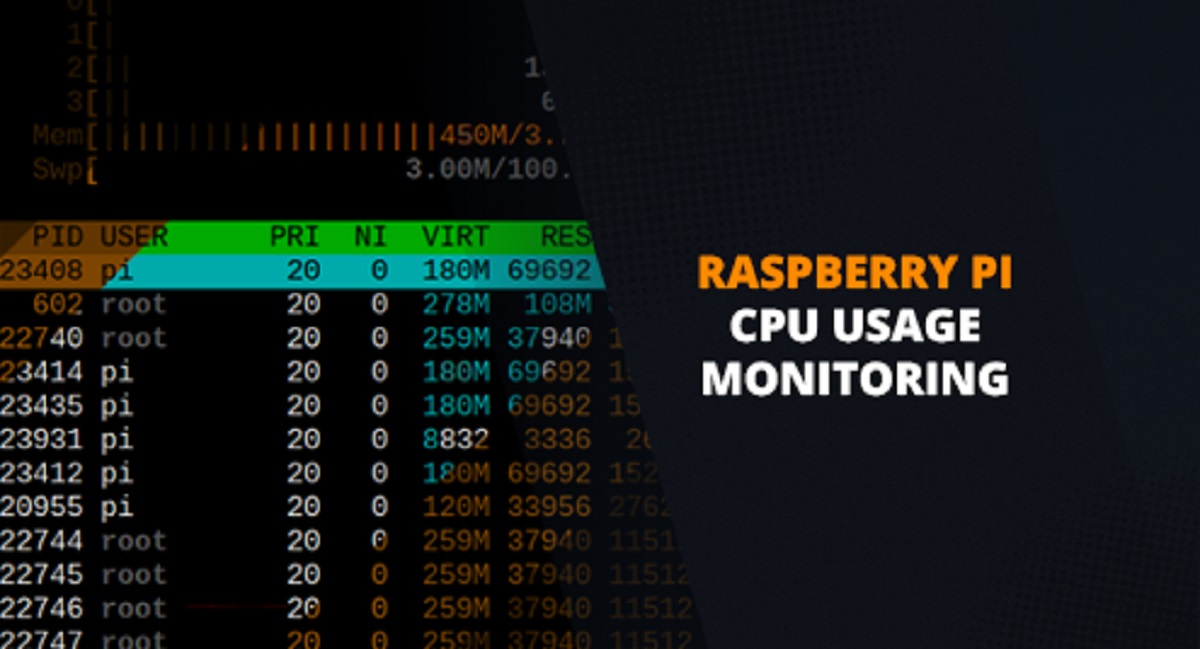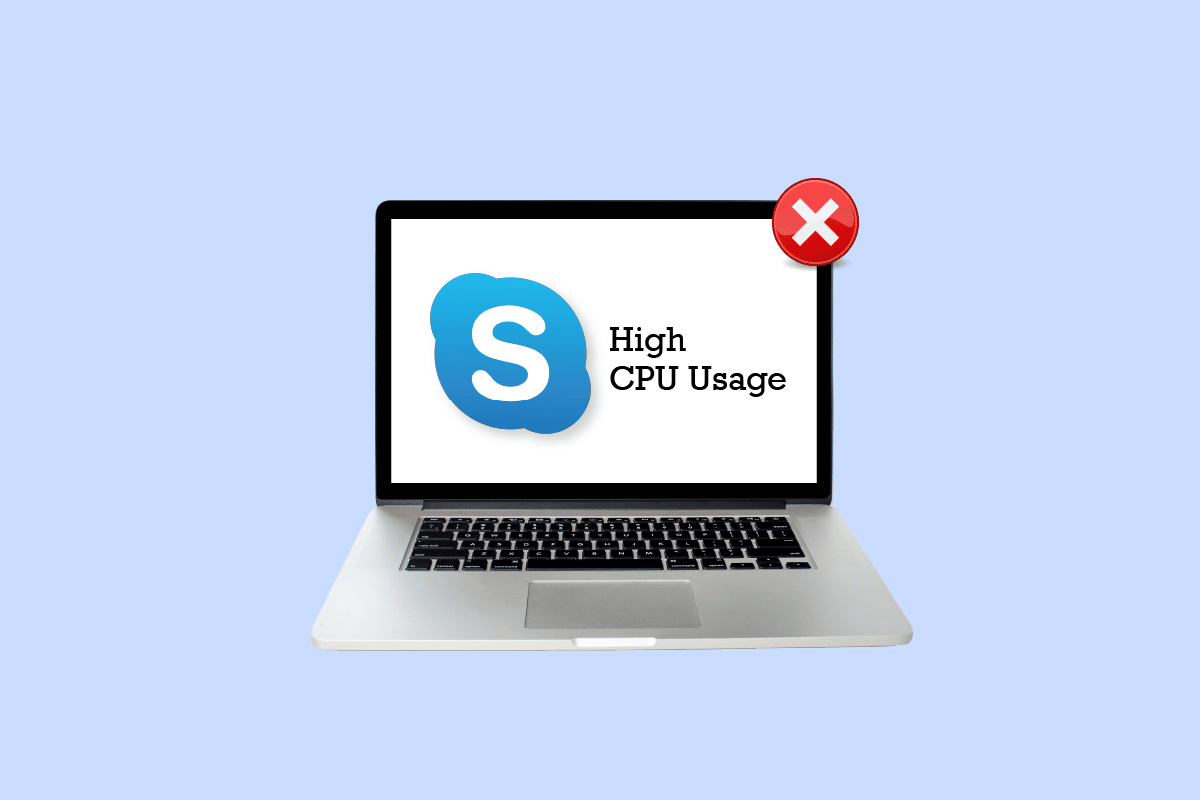Introduction
Welcome to this comprehensive guide on how to clear CPU usage. If you’ve noticed your computer becoming sluggish, unresponsive, or experiencing random freezes, it’s likely due to high CPU usage. In this article, we’ll explore what CPU usage is, why it’s a problem, and provide you with effective solutions to mitigate it.
The CPU, or Central Processing Unit, is the brain of your computer. It carries out the instructions of a computer program by performing basic arithmetic, logical, control, and input/output operations. CPU usage refers to the amount of processing power used by various programs and processes running on your system at any given time.
High CPU usage can lead to a significant slowdown in your computer’s performance. It can cause delays in opening programs, slow down the execution of tasks, and even cause your system to freeze or crash. Understanding the causes and effective methods to clear CPU usage is crucial for maintaining a smooth and efficient computing experience.
In the following sections, we will explore different approaches to identify and address high CPU usage. We will discuss how to determine CPU usage, identify the programs and processes hogging CPU resources, and take necessary actions to alleviate the problem.
To clear CPU usage effectively, we will cover steps such as closing unnecessary programs and processes, updating or removing incompatible software, scanning for malware, disabling startup programs, adjusting power options, tweaking system settings, and considering hardware upgrades.
By following the strategies outlined in this guide, you’ll be able to regain control over your CPU usage and experience improved performance on your computer. So, without further ado, let’s dive into the details and learn how to clear CPU usage efficiently.
What is CPU Usage?
CPU usage refers to the amount of processing power that is being utilized by the Central Processing Unit (CPU) of your computer at any given time. It is a crucial metric that indicates how much of the CPU’s capacity is being used to execute the instructions of running programs and processes.
Measured as a percentage, CPU usage reflects the workload on the CPU. A lower percentage indicates that the CPU is idle or underutilized, while a higher percentage signifies that the CPU is being heavily tasked and is operating near its maximum capacity.
CPU usage can vary depending on the tasks being performed on your computer. For example, if you’re running resource-intensive applications such as video editing software or playing graphic-intensive games, the CPU usage will be higher. On the other hand, if you’re performing simple tasks like web browsing or word processing, the CPU usage will be relatively lower.
Monitoring CPU usage is essential for several reasons. Firstly, it allows you to assess the overall performance of your computer and identify any underlying issues that may be affecting its responsiveness. Secondly, it helps in troubleshooting problems such as system slowdowns, freezes, or crashes. By analyzing CPU usage patterns, you can pinpoint the programs or processes that are consuming excessive resources and take appropriate action.
High CPU usage is a common problem that can lead to system lag, decreased productivity, and even hardware overheating. It can be caused by several factors, including resource-intensive applications, background processes, malware or viruses, software conflicts, outdated drivers, or insufficient hardware capabilities.
Managing CPU usage is crucial for maintaining optimal system performance. By understanding the causes of high CPU usage and implementing effective solutions, you can ensure that your computer operates efficiently and smoothly.
In the next sections, we will explore various methods to identify and address high CPU usage. We will cover steps such as closing unnecessary programs and processes, updating or removing incompatible software, scanning for malware, disabling startup programs, adjusting power options, tweaking system settings, and considering hardware upgrades.
By following these guidelines, you’ll be able to effectively manage and clear CPU usage, leading to improved performance and a better computing experience.
Why is High CPU Usage a Problem?
High CPU usage can pose several problems and negatively impact the performance and functionality of your computer. Understanding these issues can help you recognize the importance of managing and clearing CPU usage effectively.
1. System Slowdown: When your CPU is operating at maximum capacity, it may struggle to keep up with the demands of running programs and processes. This can result in significant system slowdowns, causing delays in opening applications, executing tasks, and switching between programs.
2. Unresponsiveness: Excessive CPU usage can lead to unresponsiveness, where your computer becomes slow to respond to your commands. This can be frustrating, especially when trying to perform essential tasks or complete work efficiently.
3. Freezes and Crashes: In severe cases, high CPU usage can cause your computer to freeze or crash. When the CPU is overwhelmed, it may fail to process instructions properly, leading to system instability and the need for a forced restart.
4. Reduced Multitasking Capability: High CPU usage can limit your ability to multitask effectively. With limited processing power available, running multiple programs simultaneously can become challenging, leading to decreased productivity.
5. Overheating: When the CPU is pushed to its limits for prolonged periods, it generates more heat. If your computer’s cooling system is ineffective or clogged with dust, the increased heat can cause overheating, leading to potential hardware damage or even system shutdowns to prevent further harm.
6. Increased Energy Consumption: Running your CPU at high usage levels for extended periods can also result in increased energy consumption. This not only impacts your electricity bill but also contributes to environmental concerns.
7. Wear and Tear on Hardware: Continuous high CPU usage can put strain on the physical components of your computer, including the CPU itself. Over time, this can lead to hardware degradation and reduced lifespan.
It is crucial to address high CPU usage promptly to mitigate these problems and ensure smooth and efficient computer performance. By identifying the underlying causes and implementing appropriate solutions, you can clear CPU usage and restore your system’s functionality.
In the following sections, we will discuss effective methods to determine CPU usage, identify the programs and processes causing high CPU usage, and provide steps to mitigate it. By proactively managing CPU usage, you can optimize your computer’s performance and maintain a stable and responsive computing experience.
Determine CPU Usage
Before taking any steps to clear CPU usage, it’s essential to determine how much of your CPU’s capacity is being utilized. By monitoring CPU usage, you can identify any excessive strain on the CPU and pinpoint the processes or programs responsible for it. Here are some methods to determine CPU usage:
1. Task Manager: The Task Manager is a built-in Windows utility that provides real-time information about the performance of your computer, including CPU usage. To access the Task Manager, right-click on the taskbar and select “Task Manager” or press “Ctrl + Shift + Esc” on your keyboard. In the Task Manager window, navigate to the “Performance” tab and observe the CPU Usage graph. It displays the current usage as a percentage, allowing you to monitor the overall CPU usage in real-time.
2. Resource Monitor: The Resource Monitor is a more advanced tool that provides detailed information about CPU usage and the processes utilizing CPU resources. To open the Resource Monitor, press the “Windows + R” keys, type “resmon” in the Run dialog box, and hit Enter. In the Resource Monitor window, select the “CPU” tab to view a list of processes along with their CPU usage percentages and other useful data.
3. Third-Party Monitoring Tools: There are various third-party CPU monitoring tools available that provide additional features and insights into CPU usage. These tools often offer more detailed statistics, customizable notifications, and historical data tracking. Some popular options include HWMonitor, Core Temp, and MSI Afterburner.
By using these methods, you can determine the current CPU usage and track any spikes or sustained high usage. This information will be valuable in the next steps as you identify the specific programs and processes causing the high CPU usage.
In the following sections, we will discuss how to identify and address the programs and processes responsible for high CPU usage. By analyzing the CPU usage data, you can make informed decisions and take appropriate actions to clear CPU usage effectively.
Identify Programs and Processes Causing High CPU Usage
Once you’ve determined the overall CPU usage, the next step is to identify the specific programs and processes that are causing the high CPU usage. By pinpointing these culprits, you can take targeted action to clear CPU usage. Here are some methods to identify the programs and processes responsible:
1. Task Manager: The Task Manager is a valuable tool for identifying high CPU usage culprits. Open the Task Manager by right-clicking on the taskbar and selecting “Task Manager” or pressing “Ctrl + Shift + Esc.” Navigate to the “Processes” or “Details” tab and sort the processes by CPU usage (click on the “CPU” column). Here, you can see which processes are utilizing the most CPU resources. Keep an eye out for any unusual or excessively high CPU usage percentages.
2. Resource Monitor: The Resource Monitor provides more detailed information about CPU usage and can help identify specific processes causing high CPU usage. Access the Resource Monitor by pressing “Windows + R,” typing “resmon” in the Run dialog box, and hitting Enter. In the Resource Monitor, switch to the “CPU” tab and sort the processes by “Average CPU” or “Maximum CPU” usage. Identify the processes with high CPU usage and note their names.
3. Third-Party Monitoring Tools: Third-party CPU monitoring tools often offer more comprehensive insights into CPU usage. These tools may provide detailed statistics, graphs, and alerts when CPU usage exceeds a certain threshold. Explore options such as HWMonitor, Core Temp, or Process Explorer to gain a deeper understanding of which programs and processes are consuming excessive CPU resources.
4. Online Research: If you come across unfamiliar or suspicious processes, performing an online search can help you determine their nature and whether they are legitimate. Many websites and forums provide insights into common processes and their impact on CPU usage. Verify the processes’ legitimacy before taking any action.
By utilizing these methods, you can identify the specific programs and processes responsible for high CPU usage. This information will guide you in taking appropriate steps to clear CPU usage effectively.
In the next sections, we will discuss various strategies to mitigate high CPU usage, including closing unnecessary programs and processes, updating or removing incompatible software, scanning for malware, disabling startup programs, adjusting power options, tweaking system settings, and considering hardware upgrades. By following these steps, you can effectively manage and clear CPU usage, leading to improved system performance and reliability.
Close Unnecessary Programs and Processes
One effective strategy to clear CPU usage is to close any unnecessary programs and processes that are running in the background. These background programs consume CPU resources even when they are not actively being used. By closing them, you can free up valuable CPU capacity. Here’s how to close unnecessary programs and processes:
1. Task Manager: Open the Task Manager by right-clicking on the taskbar and selecting “Task Manager” or pressing “Ctrl + Shift + Esc.” In the Processes or Details tab, identify the programs or processes that are consuming high CPU resources. If you find any programs that you don’t need at the moment, right-click on them and select “End Task” or “End Process.”
2. System Tray: The system tray, located on the right side of the taskbar, contains icons for various running programs and processes. Many of these programs may continue running in the background, using CPU resources unnecessarily. Right-click on each icon and exit or close any programs that you don’t require immediately.
3. Startup Programs: Some programs are set to launch automatically when you start your computer, consuming CPU resources from the get-go. To prevent unnecessary programs from running at startup, open the Task Manager, go to the Startup tab, and disable any programs you don’t need immediately. Be cautious not to disable any essential system programs or security software.
4. Background Services: In addition to programs, various background services and processes may be consuming CPU resources. These services are essential for the proper functioning of your computer. However, some non-essential services may still be running, impacting CPU usage. To manage background services, open the Task Manager, go to the Services tab, and identify any non-essential services that are using excessive CPU resources. Right-click on them and select “Stop” or go to the Services applet in the Control Panel to adjust their startup settings.
Closing unnecessary programs and processes will help reduce CPU usage and free up resources for more critical tasks. However, be mindful not to close any vital system processes that are necessary for your computer’s functionality.
In the next sections, we will explore additional methods to address high CPU usage, such as updating or removing incompatible software, scanning for malware, adjusting power options, tweaking system settings, and considering hardware upgrades. By implementing these strategies, you can effectively manage and clear CPU usage, leading to improved performance and smoother operations.
Update or Remove Incompatible Software
Outdated or incompatible software can sometimes cause high CPU usage. Software conflicts, bugs, or compatibility issues can result in excessive CPU utilization. Updating or removing incompatible software is an essential step in clearing CPU usage. Here’s how to update or remove incompatible software:
1. Software Updates: Check for available updates for all the software installed on your computer. Updates often include bug fixes, performance improvements, and compatibility enhancements. Open each software program and look for options like “Check for Updates” or “Update Now” in the settings menu. Alternatively, many software applications have an automatic update feature that can be enabled.
2. Operating System Updates: Keep your operating system up to date by installing the latest updates provided by the software vendor. These updates include important fixes and patches that address compatibility issues and improve system performance. On Windows, go to “Settings” > “Update & Security” > “Windows Update” to check for available updates. On macOS, go to the Apple menu and select “System Preferences” > “Software Update.”
3. Remove Incompatible Software: If you suspect a specific program to be causing high CPU usage or if it’s no longer necessary, consider removing it from your computer. Open the “Control Panel” on Windows or “Applications” folder on macOS and uninstall programs that you don’t need or that are known to cause issues. Ensure you follow the proper uninstallation procedure to remove all associated files and registry entries.
4. Compatibility Mode: In some cases, you may encounter older software that is not fully compatible with your current operating system or hardware. You can try running such programs in compatibility mode to mitigate compatibility issues. Right-click on the program’s shortcut or executable file, select “Properties,” and navigate to the “Compatibility” tab. Enable the compatibility mode option and choose the appropriate operating system version from the dropdown menu.
By updating software to the latest versions and removing incompatible programs, you can resolve compatibility-related issues that contribute to high CPU usage. Ensure that all software on your computer is up to date to minimize the chances of software conflicts and maximize system performance.
In the next sections, we will discuss additional methods to address high CPU usage, such as scanning for malware, adjusting power options, tweaking system settings, and considering hardware upgrades. By implementing these strategies, you can effectively manage and clear CPU usage, leading to improved performance and smoother operations.
Scan for Malware
Malware infections can significantly impact CPU usage, causing it to spike and negatively affecting your computer’s performance. Malicious software such as viruses, spyware, or adware can run in the background, consuming valuable CPU resources. Conducting a thorough malware scan is essential to clear CPU usage. Here’s how to scan for malware:
1. Use Antivirus Software: Ensure that you have reliable antivirus software installed on your computer. Update the antivirus program with the latest virus definitions to enhance its detection capabilities. Perform a full system scan to search for and remove any malicious files or software that may be causing high CPU usage. Some popular antivirus programs include Windows Defender (pre-installed on Windows), Avast, Bitdefender, and Norton.
2. Malware Removal Tools: Use specialized malware removal tools to supplement your antivirus software. These tools often focus on specific types of malware or perform more thorough scans. Examples include Malwarebytes, AdwCleaner, and HitmanPro. Download and install these tools, update them, and then run a full system scan to identify and remove any malware.
3. Safe Mode Scanning: If you suspect that malware is affecting CPU usage but cannot remove it while your computer is running normally, try scanning in Safe Mode. Boot your computer into Safe Mode by rebooting your computer and pressing the appropriate key (usually F8 or Shift) during startup. In Safe Mode, run your antivirus software or malware removal tool to perform a deep scan and remove any malware without interference from other programs or processes.
4. Regular Scanning Schedule: To maintain a secure and optimized system, schedule regular malware scans. Set up your antivirus software to perform automatic scans on a daily, weekly, or monthly basis. This ensures ongoing protection and early detection of any malware that may impact CPU usage.
By regularly scanning for malware and removing any malicious software, you can clear CPU usage and restore your computer’s performance. Additionally, ensure that your operating system and software applications have the latest security updates to protect against new types of malware.
In the next sections, we will discuss additional methods to address high CPU usage, such as disabling startup programs, adjusting power options, tweaking system settings, and considering hardware upgrades. By following these strategies, you can effectively manage and clear CPU usage, leading to improved performance and smoother operations.
Disable Startup Programs
Many programs are set to launch automatically when you start your computer, running in the background and consuming CPU resources. Disabling unnecessary startup programs can help clear CPU usage and improve system performance. Here’s how to disable startup programs:
1. Task Manager: Open the Task Manager by right-clicking on the taskbar and selecting “Task Manager” or pressing “Ctrl + Shift + Esc.” Go to the “Startup” tab, where you will find a list of programs that launch during startup. Identify the programs that you don’t need immediately or that are contributing to high CPU usage. Right-click on each program and select “Disable.” Be cautious not to disable any essential system programs or security software.
2. System Configuration (Windows): Press “Windows + R” on your keyboard to open the Run dialog box. Type “msconfig” and hit Enter. In the System Configuration window, navigate to the “Startup” tab. Here, you can see a list of programs that launch at startup. Uncheck the boxes next to the programs that you want to disable. Again, exercise caution to avoid disabling critical system processes or security software.
3. macOS Users: Open the Apple menu and select “System Preferences.” Click on “Users & Groups” and navigate to the “Login Items” tab. Here, you’ll find a list of programs that launch during startup. Select the programs that you don’t need immediately and click on the “-” button below the list to remove them.
By disabling unnecessary startup programs, you’ll reduce the number of processes running in the background, freeing up CPU resources. This can lead to improved system responsiveness and reduced CPU usage.
However, be cautious when disabling startup programs. Some programs may be necessary for your computer’s stability or security. If you’re uncertain about a program’s importance, it’s best to research it before disabling it.
In the next sections, we will discuss additional methods to address high CPU usage, such as adjusting power options, tweaking system settings, and considering hardware upgrades. By implementing these strategies, you can effectively manage and clear CPU usage, leading to improved performance and smoother operations.
Adjust Power Options
Adjusting power options on your computer can help optimize CPU usage and improve overall performance. By modifying power settings, you can ensure that your computer utilizes its resources efficiently. Here are some steps to adjust power options:
1. Windows Power Options: On Windows, you can access power options by right-clicking on the battery icon in the system tray or by going to “Control Panel” > “Power Options.” Here, you’ll find different power plans, such as Balanced, Power Saver, and High Performance. Select the power plan that meets your needs. If your computer is experiencing high CPU usage and you require maximum performance, choose the High-Performance plan. However, note that this may consume more power. The Balanced plan is a good option for most users, as it balances performance and power consumption.
2. Advanced Power Settings: Within the power options, you can access advanced settings for more granular control. Click on “Change plan settings” next to the selected power plan, then select “Change advanced power settings.” In the advanced settings window, you’ll find options such as processor power management, minimum and maximum processor state, and cooling policy. Adjusting these settings can help improve CPU usage and overall performance. For example, you can set the maximum processor state to a lower percentage to reduce CPU usage during periods of inactivity.
3. macOS Energy Saver Options: On macOS, you can access power options by going to the Apple menu > “System Preferences” > “Energy Saver.” Here, you can adjust settings for when your computer is plugged in and when it’s running on battery power. Drag the sliders to adjust the display sleep and computer sleep times according to your preferences. You can also enable the “Put hard disks to sleep when possible” option to conserve power and reduce CPU usage.
By adjusting power options, you can optimize CPU usage and balance performance with power consumption. Experiment with different power plans and settings to find the configuration that suits your needs best.
In the next sections, we will discuss additional methods to address high CPU usage, such as tweaking system settings and considering hardware upgrades. By implementing these strategies, you can effectively manage and clear CPU usage, leading to improved performance and smoother operations.
Adjust System Settings
Adjusting certain system settings can help optimize CPU usage and improve overall system performance. By fine-tuning these settings, you can ensure that your computer operates efficiently and utilizes its resources effectively. Here are some system settings to consider adjusting:
1. Visual Effects: Visual effects and animations can consume CPU resources. Adjusting the visual settings can reduce the strain on your CPU. On Windows, right-click on the “Start” button, select “System,” then click on “Advanced system settings” on the left side. In the System Properties window, click on the “Settings” button under the “Performance” section. Here, you can either select the “Adjust for best performance” option to disable all visual effects or choose specific visual effects to disable. On macOS, go to “System Preferences” > “Accessibility” > “Display” and check the “Reduce motion” option to minimize CPU usage from visual effects.
2. Background Services and Processes: Some background services and processes can consume significant CPU resources. To optimize CPU usage, review the services and processes running on your computer and disable any unnecessary ones. On Windows, you can access the Task Manager (right-click on the taskbar and select “Task Manager”) or the Services application in the Control Panel to manage background services. On macOS, use the Activity Monitor (found in the Applications > Utilities folder) to monitor and manage processes.
3. Virtual Memory: Adjusting the virtual memory (also known as the page file) settings can help optimize CPU usage. On Windows, go to “Control Panel” > “System” > “Advanced system settings” > “Settings” under the “Performance” section. In the Performance Options window, go to the “Advanced” tab and click on “Change” under the Virtual Memory section. Ensure that the “Automatically manage paging file size for all drives” option is checked. On macOS, the virtual memory settings are managed automatically and don’t require user adjustment.
4. Software Background Activity: Some software programs and applications may run unnecessary processes or perform background activities that consume CPU resources. Review the settings for your installed software and disable any unnecessary background activities. Look for options related to automatic updates, backups, or synchronizations and adjust them to reduce their impact on CPU usage.
By adjusting these system settings, you can optimize CPU usage and enhance overall system performance. However, be cautious when making changes and ensure that you understand the implications of each setting.
In the next sections, we will discuss additional methods to address high CPU usage, such as considering hardware upgrades. By implementing these strategies, you can effectively manage and clear CPU usage, leading to improved performance and smoother operations.
Upgrade Hardware
If you’ve tried various software-based solutions but are still experiencing persistent high CPU usage, it may be time to consider upgrading your hardware. Upgrading certain components can provide a significant boost in performance and help clear CPU usage. Here are some hardware upgrades to consider:
1. CPU: Upgrading your CPU to a more powerful and efficient model can greatly improve overall system performance and reduce CPU usage. Research compatible CPUs for your motherboard and select one that offers better performance and lower power consumption.
2. RAM: Insufficient RAM (Random Access Memory) can lead to high CPU usage as your computer struggles to handle multiple tasks simultaneously. Upgrading your RAM by adding more modules or replacing existing ones with higher-capacity modules can help alleviate this issue and improve system responsiveness.
3. Storage Drive: Slow and fragmented storage drives can contribute to high CPU usage. Consider upgrading your storage drive to a Solid State Drive (SSD) for faster read and write speeds. SSDs are more responsive and efficient, allowing for smoother and quicker data access, which can reduce CPU utilization.
4. Cooling System: Inadequate cooling can cause the CPU to overheat, leading to reduced performance and increased CPU usage. Ensure that your computer has an efficient cooling system, including proper airflow, clean fans, and a functioning heat sink. Upgrading to a more advanced cooling solution, such as a better CPU cooler or more efficient case fans, can help maintain optimal CPU temperatures and prevent thermal throttling.
5. Power Supply Unit (PSU): Insufficient or unstable power supply can negatively impact CPU performance. Consider upgrading your PSU to a higher wattage and more reliable model to ensure stable and consistent power delivery, especially if you are already using a lower-end or older PSU.
Before upgrading hardware components, ensure compatibility with your existing system and consult manufacturer documentation or seek professional advice if needed. Hardware upgrades can be more complex than software adjustments and may require professional assistance if you are not familiar with computer hardware installation.
By upgrading hardware components as necessary, you can improve overall system performance and effectively address persistent high CPU usage.
In the next sections, we have covered various methods to address high CPU usage. By implementing these strategies, you can effectively manage and clear CPU usage, leading to improved performance and smoother operations.
Conclusion
Clearing CPU usage is crucial for maintaining optimal system performance and ensuring a smooth and efficient computing experience. High CPU usage can lead to system slowdowns, unresponsiveness, freezes, and reduced multitasking capability. By implementing the strategies outlined in this guide, you can effectively manage and clear CPU usage, improving overall system performance.
Start by determining CPU usage through tools such as Task Manager and Resource Monitor. Identify programs and processes causing high CPU usage and close unnecessary ones. Update or remove incompatible software and regularly scan for malware to reduce CPU strain. Disable unnecessary startup programs and adjust power options to optimize CPU usage and power consumption. Fine-tuning system settings, such as visual effects and background processes, can further enhance CPU efficiency. If necessary, consider hardware upgrades, such as a more powerful CPU, additional RAM, or a faster storage drive.
Remember to exercise caution and research or seek professional assistance when making significant changes or upgrades to your computer’s hardware. Additionally, adopting good computing practices, such as keeping your operating system and software updated, regularly scanning for malware, and practicing safe browsing habits, can help prevent high CPU usage in the future.
Incorporating these strategies into your routine maintenance and troubleshooting processes will contribute to a smoother and more efficient computing experience. By effectively managing and clearing CPU usage, you ensure that your computer operates at its best, allowing you to work, play, and perform tasks seamlessly.







